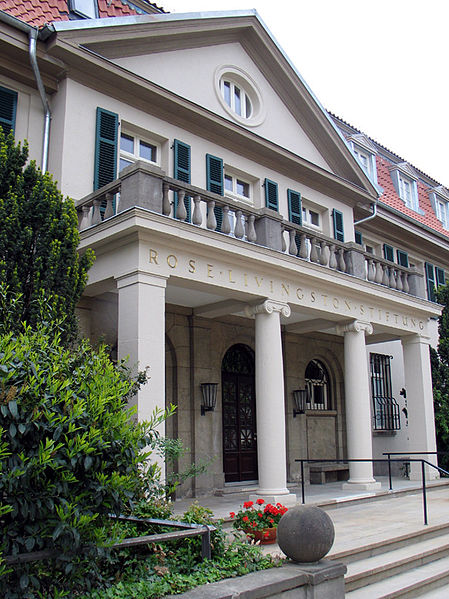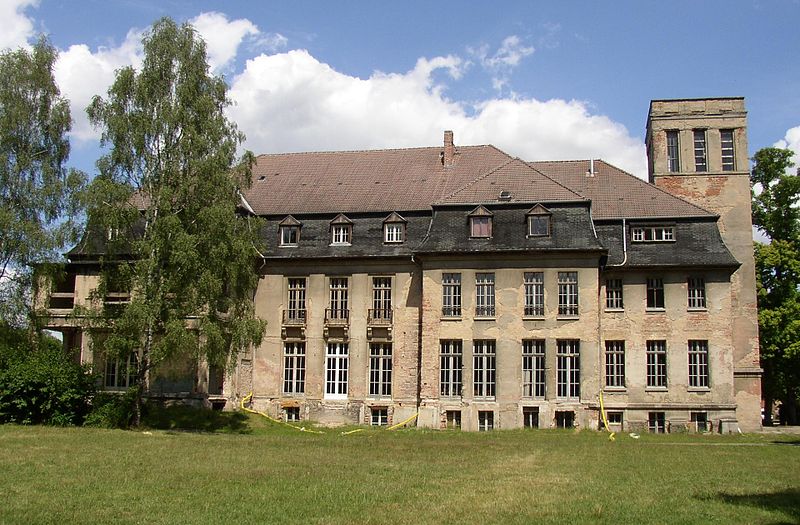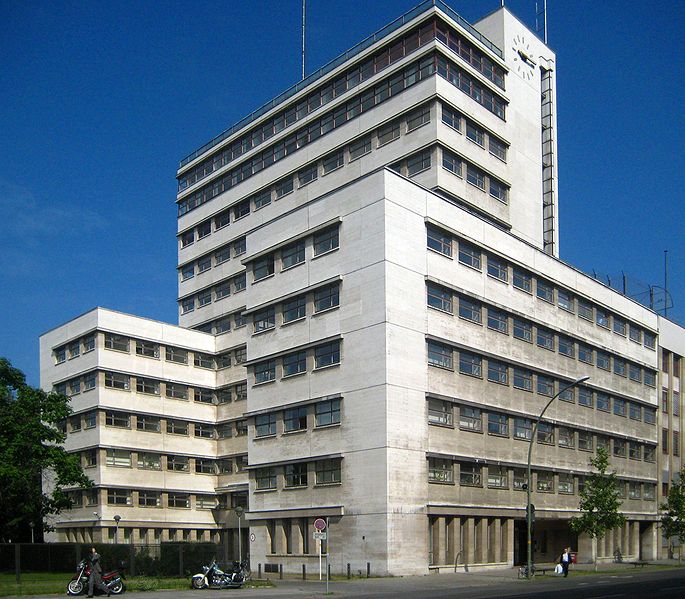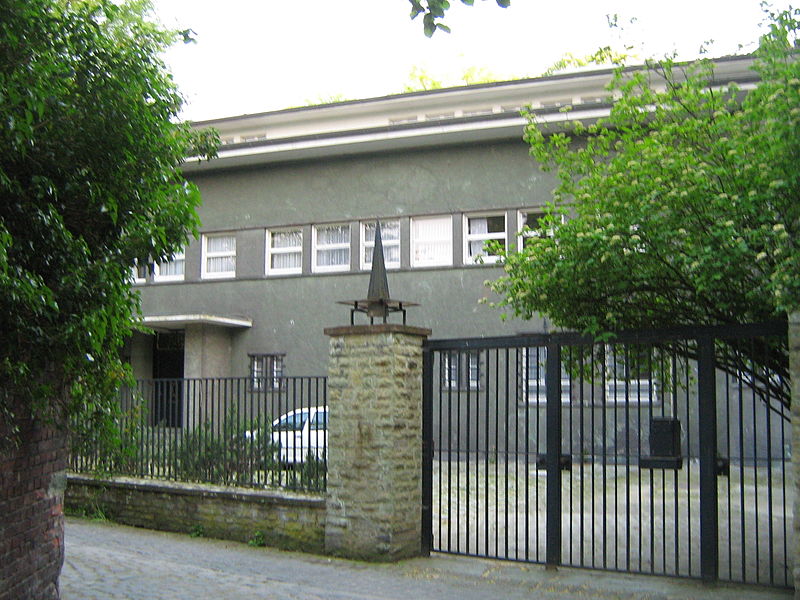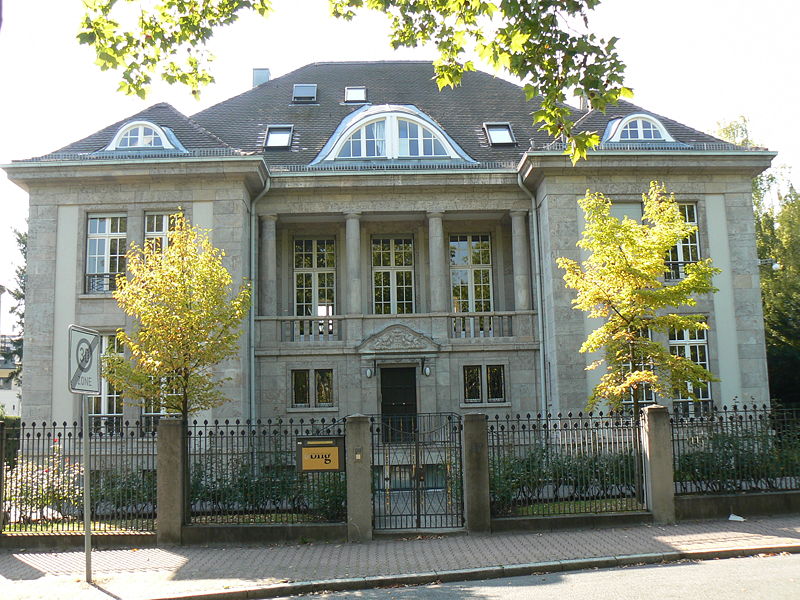<Back to Index>
- Architect and Designer Bruno Paul, 1874
PAGE SPONSOR
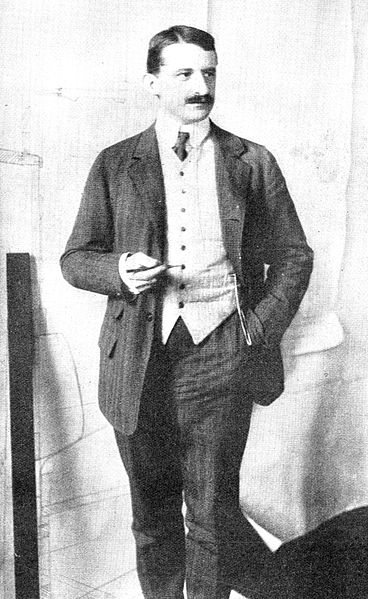
Bruno Paul (19 January 1874 – 17 August 1968) was a German architect, illustrator, interior designer and furniture designer.
Bruno Paul was born in Seifhennersdorf, a village in rural Saxony, in 1874. His father was an independent tradesman, craftsman and dealer in building materials. When he was twelve years old Paul left Seifhennersdorf for Dresden, where he briefly attended Gymnasium before entering a teacher’s training school. By 1892 he was determined to pursue a career in the arts. In 1893 he was accepted as a student at the Saxon Academy of Fine Arts.
In 1894, Paul moved to Munich, then the artistic capital of Wilhelmine Germany. He enrolled at the Munich Academy as a student of the painter Paul Höcker, one of the founding members of the Munich Secession. Höcker provided Paul’s introduction to the city’s circle of progressive artists, which included his classmates Reinhold Max Eichler, Max Feldbauer, Walter Georgi, Angelo Jank, Walter Püttner, Leo Putz, Ferdinand von Rezniçek and Walter Schulz. In 1896, Paul left the Academy to begin an independent career. After working briefly as a studio painter, he won lasting renown as an illustrator. He was a regular contributor to Jugend, the magazine from which the Jugendstil, the German counterpart to the French and Belgian Art Nouveau, derived its name. The leading figures of this movement, including Peter Behrens, Bernhard Pankok, and Richard Riemerschmid, as well as the majority of the founding members of the Munich Secession, all provided illustrations to Jugend. After 1897, Paul joined the staff of the satirical magazine Simplicissimus. Paul's weekly contributions to Simplicissimus between 1897 and 1906 won him international acclaim.
In 1898, Paul, together with Behrens, Pankok, and Riemerschmid, was working as an applied artist. He was a leading figure in the development of the Jugendstil, and quickly established himself as the premier designer for the Vereinigte Werkstätten für Kunst im Handwerk, a maker of artistic housewares in Munich. The Jugendstil Hunter’s Room he designed for the Vereinigte Werkstätten in 1900 received a gold medal at the Paris International Exposition and was the first of a series of prestigious commissions that won widespread professional admiration. He won another gold medal at the 1904 Louisiana Purchase Exposition in St. Louis, introducing his interior designs to a broad American audience. In 1906, Paul designed a festival decoration for a barracks in Munich, his first commission on an architectural scale. His design apparently (and perhaps apocryphally) impressed Kaiser Wilhelm II and facilitated his appointment to the vacant directorship of the Unterrichtsanstalt des königlichen Kunstgewerbe - Museums (educational institution of the royal museum of applied arts) in Berlin, an institution generally analogous to the South Kensington (later, Victoria and Albert) Museum in London or to the Art Institute in Chicago.
Paul’s appointment in Berlin was integral to the program of educational reforms promoted by Hermann Muthesius and Wilhelm von Bode. Paul, who was a member of the Munich Secession and the Berlin Secession as well as being one of the twelve artists who founded the German Werkbund, proved a committed reformer. He revised the curriculum of the Unterrichtsanstalt to promote practical craftsmanship as the basis of artistic education. He emphasized the training of professional designers for the applied arts industries, establishing a precedent that continues in schools of design to the present day.
Paul implemented the full scope of his program of reforms in 1924, when the Unterrichtsanstalt was merged with the art school of the Prussian Academy. The new institution, the Vereinigte Staatsschulen für freie und angewandete Kunst (united state schools for fine and applied art), provided a coherent educational program that encompassed every technical and creative aspect of artistic endeavor. Until Paul was removed from the directorship of the combined schools in 1933 for his perceived antipathy to the Nazi government, he led an institution regarded by Nikolaus Pevsner as one of the two most important in Germany — an honor shared with the Bauhaus. In terms of the scope of its curriculum and the number of its students, Paul’s school in Berlin far surpassed its contemporary in Dessau. Paul’s students, either in his nominally private architectural practice or in his academic atelier, included Ludwig Mies, Adolf Meyer, Paul Thiersh, Kem Weber, and Sergius Ruegenberg.
As a designer, Bruno Paul provided more than 2,000 furniture patterns to the Vereinigte Werkstätten. He also designed furniture for Deutsche Werkstätten Hellerau as well as designing ship interiors for the Norddeutscher Lloyd, Pianos for Ibach, and streetcars for the city of Berlin. Paul’s most historically significant furniture design was the Typenmöbel of 1908, the first example of modern, unit furniture conceived to allow an unlimited number of combinations of standardized, machine made elements. Like much of his work, the Typenmöbel was widely published in contemporary professional journals.
Paul’s architecture was closely related to his designs for furnishings and interiors. Prior to the First World War he was best known as a residential architect. His houses were simple and elegant, efficiently planned and devoid of superfluous ornament. His favored vocabulary, an abstracted classicism, had a profound influence on the work of his students and apprentices. In 1914, Paul designed a model house and two restaurants for the Werkbund exhibition in Cologne. His buildings reflected the prevailing tone of the exhibition, and underscored the extent to which his pre-war work reflected the harmonious culture advocated by the Werkbund.
After 1918, Paul’s architecture reflected the changing economic and social conditions of the Weimar Republic. In 1924, he designed the Plattenhaus Typ 1018 for the Deutsche Werkstätten, a prefabricated concrete dwelling developed in response to the pressing need for affordable housing. Although the stark, prismatic volumes of the Plattenhaus reflected the vocabulary of the neue Sachlichkeit, the elegant detailing was typical of Paul’s pre-war designs. By the end of the decade, he was completing large, commercial projects throughout Germany. In 1928, he was working on a department store for the Sinn company in Gelsenkirchen, the Dischhaus office building in Cologne, and the Hochhaus am Kleistpark, the first skyscraper in Berlin. The Sinn department store, with its cantilevered reinforced concrete frame and entirely glass curtain walls, exemplified the technical sophistication of these buildings, which demonstrated Paul’s mastery of the emerging International Style. His career was effectively terminated in 1933, when the Nazi accession resulted in his forced resignation from the Vereinigte Staatsschulen, his expulsion from the Prussian Academy, and his renunciation of the prospect of significant architectural commissions.
As a teacher, designer and architect, Bruno Paul was one of the progenitors of the Modern Movement. His work embodied one of the most significant, and frequently overlooked, directions in the history of progressive design in Europe, that of a pragmatic Modernism attuned to the needs and desires of the middle class. Paul’s mature designs embodied simplicity and clarity of form, stylistic abstraction and functional elegance. By promoting these ideals through his involvement with the Werkbund, his leadership of the Vereinigte Staatsschulen in Berlin, and his prolific work as a designer, Bruno Paul facilitated the popular acceptance of Modernism as the characteristic style of the Twentieth Century.
